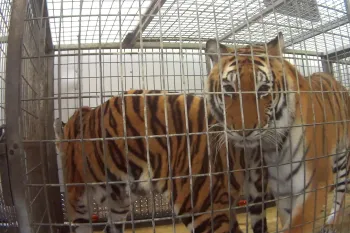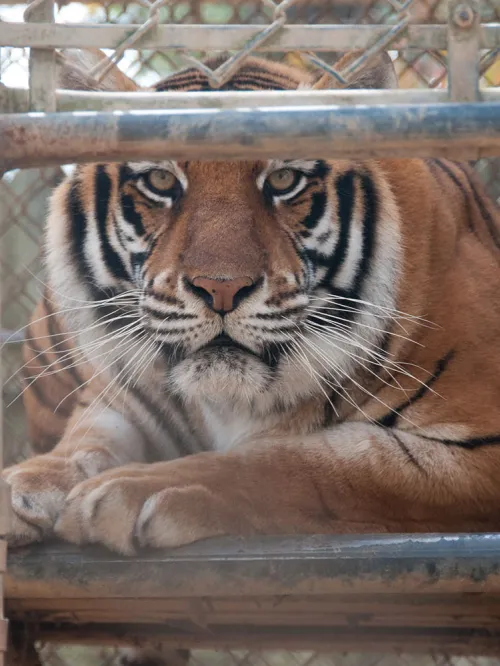
Humane World for Animals

Kathy Milani / Humane World for Animals
Helping captive wildlife
Learn how wild animals suffer in captivity for roadside zoos, tourist selfies, and entertainment. Discover the truth behind animal exploitation and how you can help stop wildlife cruelty.
operate around the world, according to the Association of Zoos and Aquariums
are suffering in captivity in South Africa for cub-petting and other exhibits
on average are imported into the U.S. every year to meet the demand for public encounters
wanderluster/Getty Images
In many Shriner-sponsored circuses, elephants still endure lives of chains, cages, and cruel training. Elephants shouldn't suffer for entertainment. Please join us in calling on Shriners International to adopt an animal-free circus policy for all chapters.
Linleo/iStock.com
Traveling wild animal shows transport animals for temporary exhibition at venues such as arenas, fairgrounds and even shopping malls. Download this toolkit to learn how you can help ban wild animal acts in your community.
We bring a broad vision and deep expertise. Learn more about our work to help keep wild animals across the globe in the wild.
MURCHISON, Texas—Before arriving at Humane World for Animals’ sanctuary Black Beauty Ranch, a marmoset named George had a lonely existence as someone’s “pet,” kept caged in a Wisconsin basement
MONROVIA, Liberia―In advance of World Chimpanzee Day (14 July), animal charity Humane World for Animals (formerly called Humane Society International) has released thought-provoking photographs of
Start saving lives by making a one-time gift today. You can also help animals all year long with a monthly contribution.
Meredith Lee/The HSUS